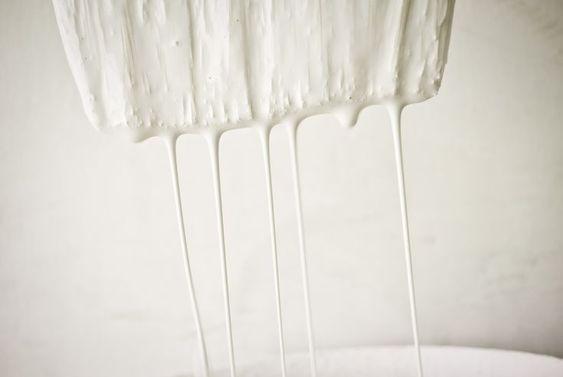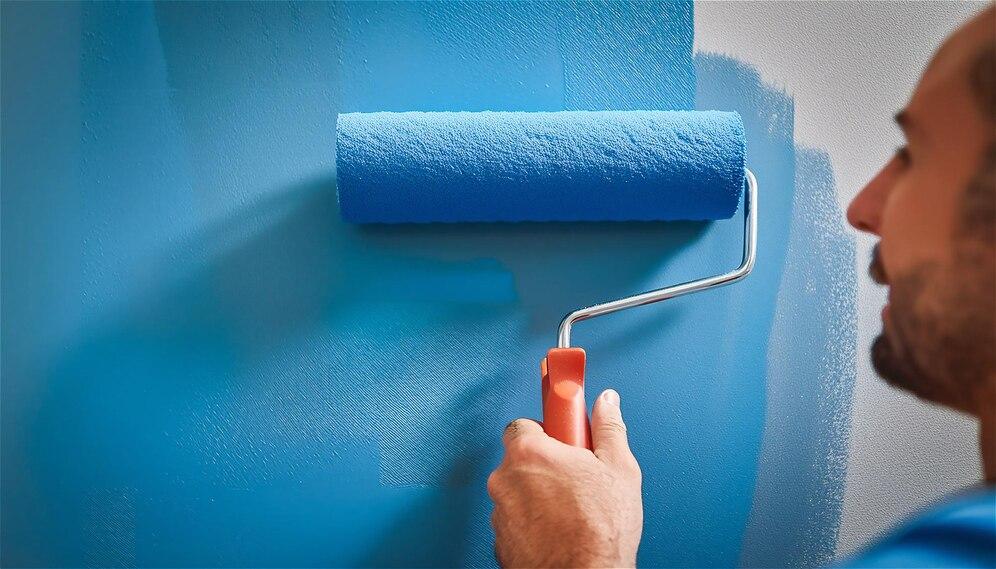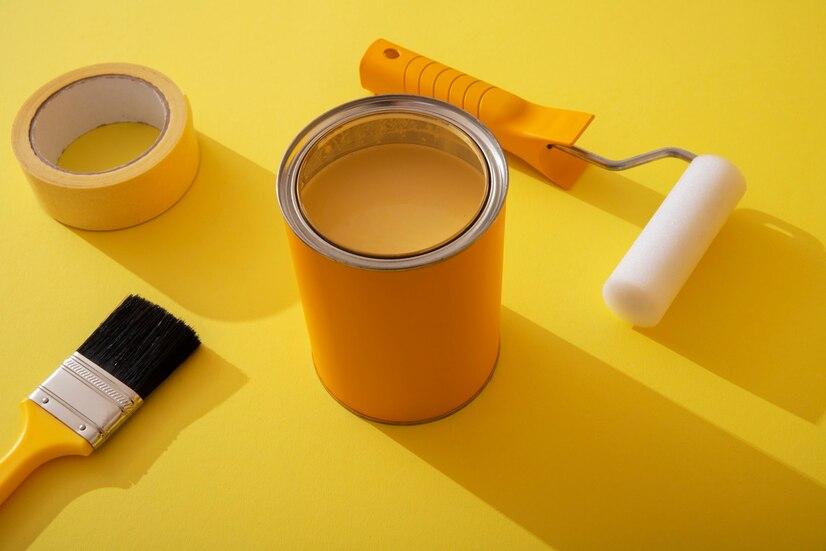



Table of Contents
- Introduction
- What is Distemper Paint?
- Composition and Features of Distemper Paint
- Characteristics of Distemper Paint
- Application Process of Distemper Paint
- How to Clean Distemper Painted Walls
- Where to Apply Distemper Paints?
- Advantages and Disadvantages of Distemper Paint
- Types of Distemper Paint
- What is Emulsion Paint?
- Composition of Emulsion Paint
- Types of Emulsion Paint
- Application Process of Emulsion Paint
- Advantages and Disadvantages of Emulsion Paint
- Key Differences between Distemper Paint and Emulsion Paint
- Conclusion
- Faq's
Introduction
When it comes to painting interiors and exteriors, choosing the right type of paint is crucial for achieving the desired aesthetic and durability. The selection of paint not only affects the visual appeal of a space but also its maintenance and longevity. Among the many options available, two common types of paint are distemper and emulsion paint, each with its own unique properties, advantages, and disadvantages.
Distemper paint is often favored for its affordability and ease of application, making it a popular choice for budget-conscious homeowners or temporary projects. On the other hand, emulsion paint represents a more modern approach to wall finishes. It is water-based and incorporates synthetic resins as binders, which provide enhanced durability and washability compared to distemper.
This article delves into the characteristics of both paints, exploring their applications in different environments from residential spaces to commercial settings and helping you make an informed decision based on your specific needs.
By understanding the fundamental differences between distemper and emulsion paints, including their composition, performance characteristics, and ideal use cases, you can select the most appropriate option for your painting project.
What is Distemper Paint?
 What is Distemper Paint?
What is Distemper Paint?
Distemper paint is one of the oldest forms of paint, traditionally made from a mixture of water, chalk, lime, and pigment. It often includes animal glue or casein as a binding agent. This type of paint is known for its affordability and ease of application, making it a popular choice for budget-conscious homeowners. Distemper can be directly applied to cement surfaces without the need for a primer or putty, which simplifies the painting process.
Composition and Features of Distemper Paint
Distemper paint is primarily composed of natural ingredients, which contributes to its eco-friendliness. The basic components include:
Water: Acts as the solvent in which other materials are mixed.
Chalk: Serves as the primary pigment and provides opacity.
Lime: Enhances durability and contributes to the paint's breathability.
Pigments: Natural pigments are added for color; these can vary widely depending on the desired hue.
Binders: Historically, distemper used natural binders like animal glue or casein. Modern formulations may incorporate synthetic binders to improve performance.
This combination results in a paint that dries to a matte finish, giving walls a soft, non-reflective appearance. Distemper is also breathable, allowing moisture vapor to escape from walls, which helps prevent mold growth in humid environments.
Characteristics of Distemper Paint
Matte Finish: Distemper paint typically dries to a flat or matte finish, making it ideal for creating a rustic look.
Breathability: Its porous nature allows moisture to escape from walls, reducing the risk of dampness and mold.
Limited Washability: Unlike emulsion paints, distemper is not fully washable; scrubbing can lead to fading or peeling.
Quick Drying Time: Distemper paint dries relatively quickly, allowing for faster recoating or completion of painting projects.
Cost-Effectiveness: It is generally less expensive than other types of paints, making it an attractive option for large areas or temporary applications.
Application Process of Distemper Paint

Applying distemper paint involves several straightforward steps:
Surface Preparation: The surface must be clean, dry, and free from dust and grease. Any cracks should be filled with lime putty.
Mixing: Distemper is often available in powder form and needs to be mixed with hot water before application to achieve the right consistency.
Application Method: It can be applied using brushes or rollers. It's advisable to start from the top of the wall and work downwards while maintaining a wet edge to avoid visible marks.
Multiple Coats: Typically, two coats are recommended for uniform coverage. Each coat should be allowed to dry before applying the next.
Clean-Up: Tools used for painting should be cleaned with water immediately after use since distemper is water-soluble.
How to Clean Distemper Painted Walls

Steps to Clean Distemper Painted Walls
Dusting:
Start by dusting the walls with a soft, dry cloth or a microfiber duster to remove any loose dirt and cobwebs. This prevents scratching the surface during cleaning.
Prepare a Cleaning Solution:
Mix a mild cleaning solution using warm water and a few drops of a gentle dish soap. Avoid harsh chemicals or strong detergents, as they can damage the paint.
Test a Small Area:
Before applying the cleaning solution to the entire wall, test it on a small, inconspicuous area to ensure it does not cause discoloration or damage.
Gentle Wiping:
Dampen a soft sponge or cloth in the cleaning solution, wring it out well to avoid excess water, and gently wipe the wall in circular motions. Avoid scrubbing too hard, as this can lead to peeling or fading of the paint.
Rinse with Clean Water:
After cleaning a section, rinse the sponge or cloth in clean water and wipe the area again to remove any soap residue.
Drying:
Allow the wall to air dry completely. If necessary, use a dry cloth to gently pat down any areas that may have retained moisture.
Addressing Stains:
For stubborn stains, you may need to repeat the process or use a diluted vinegar solution (one part vinegar to three parts water) as an alternative cleaner. Again, test this on a small area first.
Tips for Maintenance
- Regular Dusting: Regularly dusting your walls can help prevent dirt buildup and reduce the frequency of deep cleaning.
- Avoid Excess Moisture: Since distemper paint is not waterproof, avoid using excessive water during cleaning and ensure that any spills are cleaned up promptly.
- Consider Touch-Ups: If areas of the paint begin to fade or peel after cleaning, consider doing touch-ups with matching distemper paint.
By following these steps and tips, you can effectively clean distemper-painted walls while minimising the risk of damage.
Where to Apply Distemper Paints?
Distemper paint is primarily used for interior walls and ceilings in residential settings. Its affordability makes it suitable for rental properties or temporary living spaces where frequent repainting might occur. It is also commonly used in regions with low rainfall since it is not waterproof.
Advantages and Disadvantages of Distemper Paint
Advantages
- Direct Application: Can be applied directly onto cement surfaces without primer.
- Affordability: Generally cheaper than other paint types like emulsions.
- Eco-Friendly: Made from natural ingredients, making it less harmful to the environment.
- Quick Application: Easy to apply with minimal preparation required.
Disadvantages
- Durability: Typically lasts only 3-4 years before needing a repaint.
- Limited Washability: Not suitable for areas that require frequent cleaning.
- Color Fading: Colors may fade faster compared to emulsion paints.
- Peeling Risk: Can peel off when exposed to moisture or excessive scrubbing.
Types of Distemper Paint
Acrylic Distemper Paint: Offers a smooth matte finish and dries quickly.
Synthetic Distemper Paint: Provides a uniform matte finish but is less durable than acrylic options.
Oil-Bound Distemper: More water-resistant and suitable for high-traffic areas.
What is Emulsion Paint?

Emulsion paint is a modern water-based paint that incorporates resins such as acrylic or vinyl as binders. This composition provides emulsion paint with its notable durability and washability, making it a preferred choice for both residential and commercial applications. Emulsion paints are available in various finishes, including matte, silk, and gloss, allowing for greater versatility in design and application.
Composition of Emulsion Paint
The formulation of emulsion paint typically includes several key components:
Binders: These are polymers that form a continuous film on the surface once the paint dries. Common binders include acrylic resins, which provide excellent adhesion and durability, and other resins like Poly Vinyl Acetate (PVA) and SB-Latex.
Pigments: Pigments are responsible for the color of the paint and its opacity. Titanium dioxide is commonly used for white, while other pigments provide a range of colors. They also help protect the paint from UV light degradation.
Solvent: The primary solvent in emulsion paint is water, which allows for easy application and cleanup. As the paint dries, the water evaporates, leaving behind a solid film.
Additives: Various additives enhance the performance of emulsion paints. These can include anti-fungal agents to prevent mold growth, anti-settling agents to keep pigments evenly dispersed, and surfactants to improve wetting properties.
Also Read: A Guide on PU Paints - Types, Benefits, Drawbacks, Brands
Types of Emulsion Paint
Emulsion paint is a versatile option widely used in both residential and commercial settings, available in various finishes that cater to different aesthetic and functional needs. Here's a detailed look at the different types of emulsion paint finishes:
Vinyl Matte
Characteristics: Vinyl matte emulsion paint has a flat finish that effectively conceals imperfections on walls, making it ideal for areas where a smooth, uniform appearance is desired.
Applications: This finish is best suited for low-traffic areas such as bedrooms, living rooms, or ceilings where minimal wear is expected. However, it can mark easily and is not recommended for high-traffic areas or spaces prone to stains.
Advantages: The matte finish provides a soft look that can enhance the warmth of a room. It also helps to hide surface irregularities, making it a popular choice for older homes with uneven walls.
Vinyl Silk
Characteristics: Vinyl silk emulsion offers a slight sheen that enhances durability compared to matte finishes. This finish reflects some light, adding a subtle glow to the walls.
Applications: Ideal for high-moisture areas like kitchens and bathrooms, vinyl silk is highly washable and can withstand cleaning without losing its appearance. It is also suitable for living spaces that require regular cleaning.
Advantages: The washability of vinyl silk makes it easy to maintain, allowing homeowners to wipe away stains and dirt effortlessly. Its slight sheen can make spaces feel brighter and more open.
Vinyl Soft Sheen
Characteristics: This finish provides a medium sheen that balances between matte and gloss. It is resistant to humidity and offers good durability.
Applications: Vinyl soft sheen is particularly suitable for living spaces like dining rooms and family rooms where aesthetics and functionality are important. It can also be used in areas with moderate moisture levels.
Advantages: This finish can be wiped clean easily, making it practical for homes with children or pets. The medium sheen adds depth to colors while still being forgiving of wall imperfections.
Glossy Finish
Characteristics: High-gloss emulsion paints are less common but provide a shiny surface that reflects light effectively. This finish is highly durable and resistant to stains.
Applications: Glossy finishes are often used for woodwork, trim, doors, and cabinetry due to their robustness. They are also suitable for high-traffic areas where durability is essential.
Advantages: The glossy surface is easy to clean and maintain, making it ideal for kitchens and bathrooms where spills are common. The reflective quality can make small spaces appear larger by bouncing light around the room.
Application Process of Emulsion Paint
Application Process
Applying emulsion paint involves several steps:
Surface Preparation: Ensure that surfaces are clean, dry, and free from dust or grease. Any holes or cracks should be filled with appropriate fillers.
Priming: Depending on the surface type (e.g., previously painted or bare), a primer may be necessary to ensure better adhesion and coverage.
Mixing: Stir the emulsion paint thoroughly before application to ensure an even consistency.
Application Method
Use rollers for large areas and brushes for edges or detailed work. Apply in thin coats to avoid drips and ensure even coverage.
Drying Time: Allow sufficient drying time between coats as recommended by the manufacturer usually about 2-4 hours depending on conditions.
Cleanup: Clean brushes and tools with water immediately after use since emulsion paint is water-soluble when wet.
Advantages and Disadvantages of Emulsion Paint
Advantages of Emulsion Paint
Durability: Emulsion paints generally last longer than traditional paints like distemper, often exceeding five years before needing a repaint.
Washability: They are easy to clean; most stains can be wiped off with a damp cloth without damaging the paint.
Quick Drying Time: Emulsion paints dry faster than oil-based alternatives, allowing for quicker project completion.
Low Odor: The low levels of volatile organic compounds (VOCs) in water-based emulsion paints make them safer for indoor use compared to oil-based paints, which often have strong odors.
Versatility: Available in various finishes and colors, emulsion paints can be used on multiple surfaces including walls, ceilings, and even some woodwork.
Disadvantages of Emulsion Paint
Higher Cost: Emulsion paints tend to be more expensive than distemper paints, which may be a consideration for large projects or budget-conscious homeowners.
Surface Preparation Required: Unlike distemper paint, emulsion requires proper surface preparation including priming and possibly applying putty to achieve the best results.
Less Breathable: While they offer excellent protection against moisture ingress from the outside, emulsion paints can trap moisture within walls if not applied correctly.
Also Read: What is Plastic Paint - Types, Price, Benefits 2024
Key Differences between Distemper Paint and Emulsion Paint
Feature | Distemper Paint | Emulsion Paint |
Composition | Water, chalk, lime, pigment | Water-based with acrylic or vinyl resins |
Binders | Animal glue, casein | Acrylic, vinyl, or other synthetic resins |
Application | Directly on cement without primer | Requires primer and putty |
Finish | Matte, textured | Matte, silk, gloss, smooth |
Durability | 3-4 years | 5-6 years or more |
Washability | Not fully washable | Washable |
Breathability | Highly breathable | Less breathable |
Odor | Mild odor | Low odor |
Cost | Generally cheaper (approx. Rs 25/litre) | More expensive (Rs 120 - Rs 600/litre) |
Surface Preparation | Minimal preparation required | Requires thorough surface preparation |
Color Retention | Colors may fade faster | Retains color longer |
Drying Time | Dries quickly | Takes longer to dry |
Eco-Friendliness | Made from natural ingredients | Contains synthetic resins |
Ideal Applications | Interior walls, ceilings, budget-conscious | Interior walls, ceilings, high-traffic areas |
Conclusion
Choosing between distemper and emulsion paint ultimately depends on your specific needs, budget constraints, and desired aesthetic. If cost-effectiveness and ease of application are your priorities especially for temporary living situations distemper may be the better choice. However, if you're looking for durability, washability, and a variety of finishes for long-term use in high-traffic areas, emulsion paint is likely the superior option.
In summary:
Choose Distemper Paint if you are on a budget or need something easy to apply without extensive preparation.
Choose Emulsion Paint if you seek longevity, easier maintenance, and a wider range of finishes.
Understanding these differences will help you make an informed decision that best suits your painting project requirement
explore further
Latest from Contemporary ideas
More from Innovations
Resources
Dwello, for every home buyer, is a way to go from 'I feel' to 'I know', at no extra cost.




